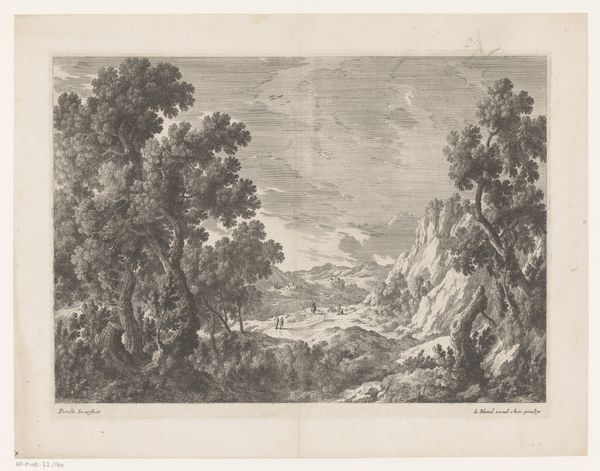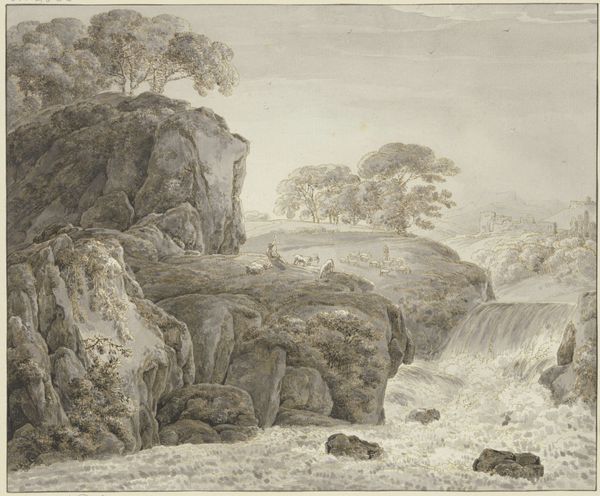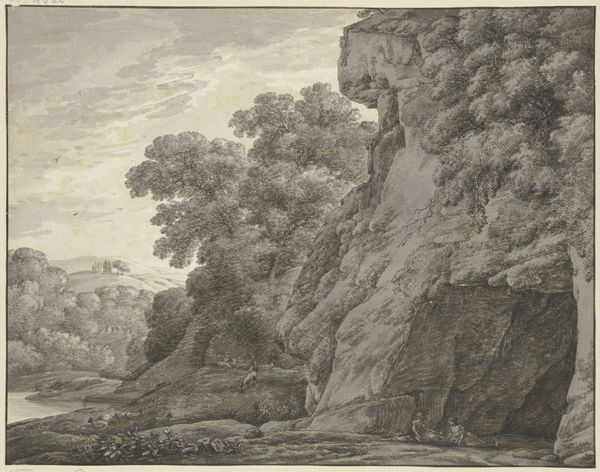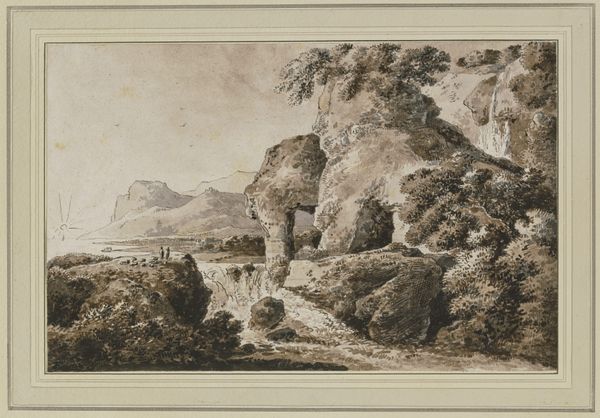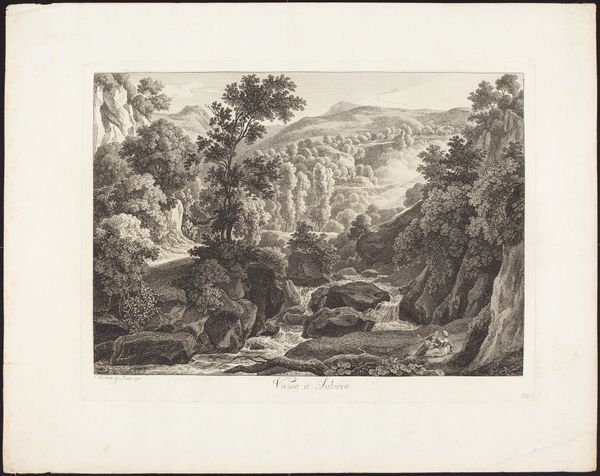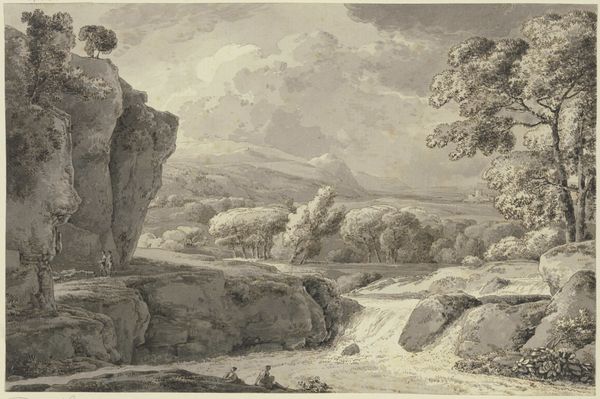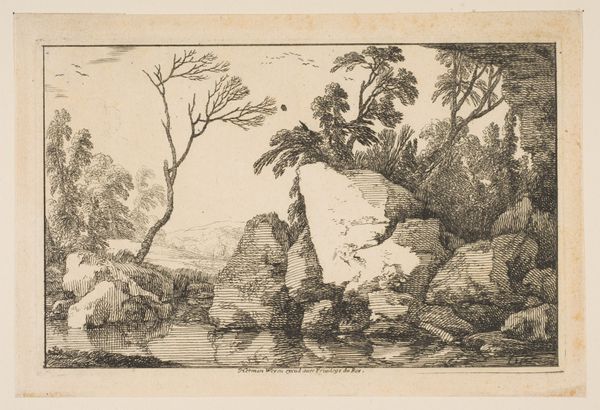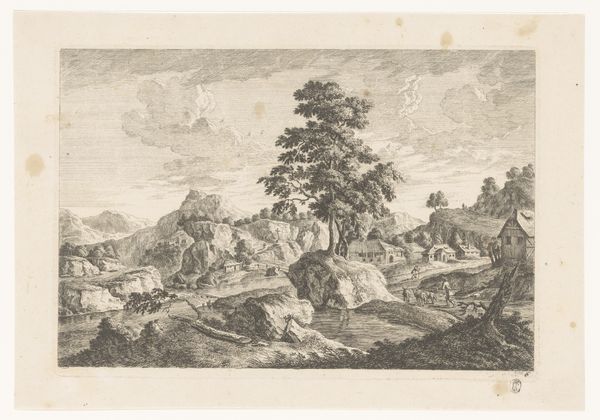
Dimensions: height 93 mm, width 142 mm
Copyright: Rijks Museum: Open Domain
Editor: We're looking at "Rocky Landscape with Dilapidated Hut," an engraving by Carl Friedrich Holtzmann, created sometime between 1750 and 1811. There's this strong sense of isolation and the romantic ideal of nature here, a stark contrast between the imposing rock and the humble, crumbling shelter. How do you interpret the socio-political forces influencing this work? Curator: That's a great starting point. Holtzmann’s work appears amidst growing urbanization. Think of the art institutions and patronage systems emerging then, influencing what was deemed worthy of artistic representation. What power structures elevated landscape as a subject? And why the specific choice of a *dilapidated* hut? Editor: Well, perhaps the ruin highlights the transience of human creation against the permanence of nature. Is it maybe commenting on social hierarchies by showing the common dwelling? Curator: Precisely! Romanticism often intertwined with social commentary. Who were the patrons consuming these images? How did they perceive this depiction of rustic life, distanced from their own realities? This image aestheticizes poverty in a sense, placing it within the romanticized past. Are there aspects that complicate or confirm this for you? Editor: It also occurs to me that making it into an engraving also makes it widely distributable. This brings nature into people's homes as the landscape rapidly industrializes. That makes a lot of sense. Curator: Absolutely. The rise of printmaking democratized art viewing but simultaneously removed the viewer further from the actual experience of the landscape. How did these accessible depictions of nature shape public perception and, perhaps, contribute to early environmental movements? Editor: So, it’s more than just a pretty picture; it's entangled with complex social dynamics and evolving environmental consciousness. Curator: Exactly! Examining the cultural context reveals layers of meaning within this seemingly simple landscape. Holtzmann offers more than just an escape to nature; it is a snapshot of changing societal views. Editor: I’ll definitely look at Romanticism differently from now on. Thanks!
Comments
No comments
Be the first to comment and join the conversation on the ultimate creative platform.
